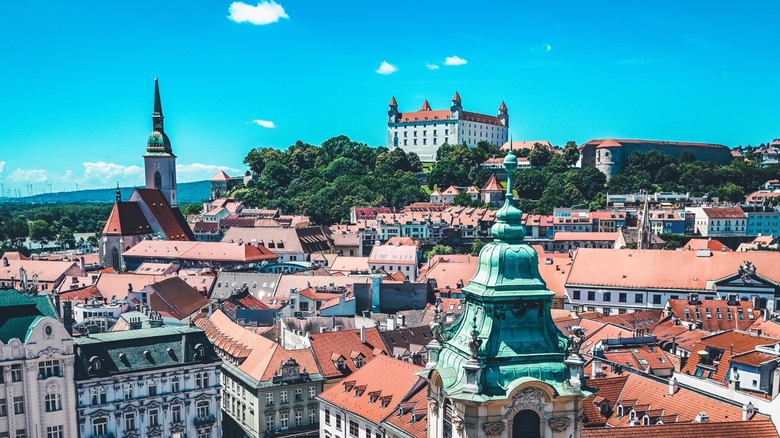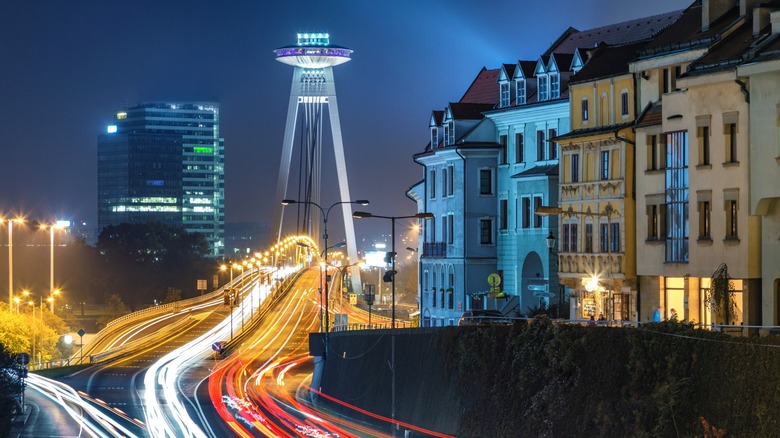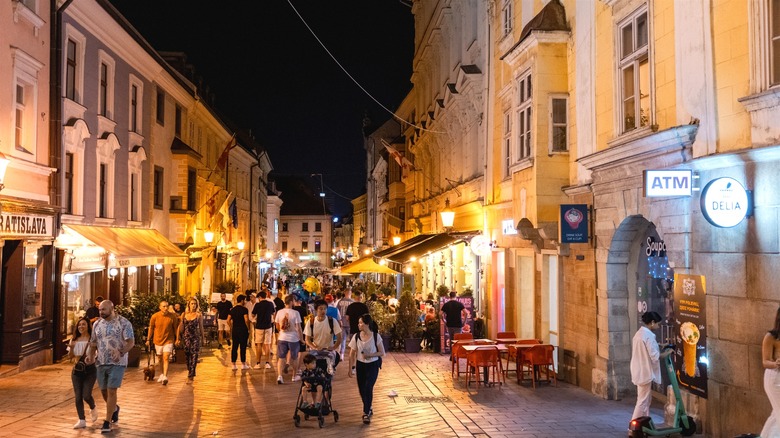Rick Steves Didn't Always Like This Less-Touristy European City (And Why He Changed His Mind)
"I admit that Bratislava used to leave me cold," travel expert Rick Steves declared, saying that the city's old town was a "dangerous ghost town" as recently as the 1990s, when communist rule fell and Slovakia had its "Velvet Divorce" from the Czech nation.
By 2010, however, Steves had a change of heart. "Changes in recent decades have transformed it into a delightful destination," the writer enthused, adding that "Bratislava's energy is inspiring." Since then, the area has continued its ascent following its freedom from communist oppression. Steves said the city had developed a youthful spirit, with thousands of university students filling the Old Town, which is a de facto campus at night with many restaurants, bars, and clubs.
Bratislava still lacks what Rick Steves calls "blockbuster sights," but that's not the point of this typically underrated European city. It's an intimate place, more suitable for easy living than sightseeing and itinerary-chasing. For that, you're better off heading over the Danube to Vienna, which sports its bustling streets, towering architecture, and unforgettable wine culture.
One of Europe's great urban success stories
Rick Steves considers Bratislava to be one of "Europe's great urban success stories." Color and increased economic activity washed over the whole city following Slovakia's newfound freedom in the '90s, leading to major improvements in the Old Town, industrial quarter, and once-gloomy suburb of Petržalka. Leading tour guide Martin Sloboda impressed Steves with Bratislava's powers of not only forward-thinking ambition but also respect for history, which the communists often lacked after the Second World War.
Sloboda took Steves to Café Kormúth, an inviting, old-fashioned cafe decorated with extensive wood carvings and dazzling ceiling artwork reflecting Slovakian history, including the full coat of arms of the Austo-Hungarian empire. Steves had no problem paying €10 ($11) to "luxuriate in the 17th century," enjoying the eatery's free-range produce dishes and delectable cakes served on rare, historic porcelain.
For a post-communist icon of Bratislava, visit the SNP bridge observation deck. Reviled by some as a tyrannical throwback, the city's businesspeople and restaurateurs turned the space-age structure into an upscale restaurant named UFO, where one can expect elegant gastronomy and sweeping city views.
A young, fun old town
If Krakow is the Boston of Poland, then Bratislava could be the Portland of Slovakia. Like the Oregon city, Bratislava is a small place with a young crowd interested in cafe culture, creativity, and community — all of which are best represented in the city's Old Town.
Michalská Street is a busy thoroughfare that impressed Steves with its thriving cafés and boutiques. "[It is a] symbol of how far the city has come," Steves wrote, describing the area as "delightful." Nearby Laurinská Street had its charms, too, with characterful boutiques and several of the Old Town's playful statues, such as a Čumil, a bronze sculpture of a smiling man resting at the top of a manhole.
In Bratislava, drinks are cheap and bars are numerous. After sampling the pork, dumplings, and other traditional central European fare at Koliba Kamzik Zelena, check out Manifest, a colorful cocktail bar with neon lighting and graffiti motifs; KGB, a cellar pub with Soviet iconography; and the Antique American Bar, which has a vibe somewhere between prohibition and "Mad Men." All of these — and more — contribute to the city's vibe and energy, which, as Steves said, "is inspiring."


